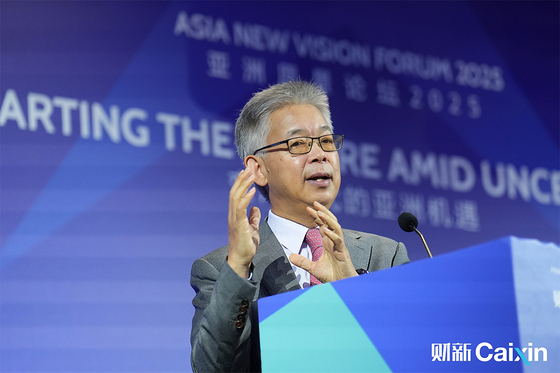The article presents an extensive discussion on the current state and future prospects of the Chinese economy, summarizing key insights from three experts—Huang Yiping, Miao Yanliang, and Julian Evans-Pritchard—delivered at the Asia New Vision Forum 2025 in Singapore. Highlights include narratives on economic challenges, growth dynamics, policy shifts, structural strengths, and evolving global perceptions.[para. 1][para. 2]
Huang Yiping sets the stage by highlighting two prevalent narratives regarding China’s economy, both with negative undertones but differing in intensity. He notes that while sectors like electric vehicles (EVs) are thriving—partially attributed to state subsidies—other traditional sectors such as real estate are underperforming, dampening overall consumption and economic vigor. This bifurcation underscores the “tale of two economic forces” at play: optimism among entrepreneurs in new, productive sectors versus pessimism in traditional industries plagued by overcapacity and stagnation. Huang identifies two principal challenges: tepid domestic consumption, which risks exacerbating overcapacity, and the sluggish pace of industrial upgrading, as new industries rise but old ones lag to exit. He argues that the government’s growth-stabilization policies should combine macroeconomic measures, structural reforms, and changes in local government behaviors—with a greater emphasis on letting market forces allocate resources, rather than centralized or local government controls. These shifts, Huang suggests, are vital as China shifts from an export-led growth model to one that relies on smoother, more robust domestic economic circulation.[para. 3][para. 4][para. 5][para. 6][para. 7][para. 8][para. 9][para. 10][para. 11][para. 12][para. 13][para. 14][para. 15]
Miao Yanliang echoes these sentiments, observing that China’s rapid phase of economic growth has ended, requiring a shift toward higher-quality productive forces through both digital and green transitions—again, citing the EV industry as a paradigm. In 2024, China produced 30 million vehicles, with EVs accounting for 40%. Nonetheless, the GDP contribution from car sales remained only a quarter of that from real estate, emphasizing the need for further stimulus and economic diversification. Miao outlines three long-term drivers: the ongoing deleveraging financial cycle (now reaching its 8th year, potentially nearing a turning point), escalating trade frictions that paradoxically encourage domestic consumption and outbound expansion by Chinese firms, and a policy pivot making consumption a government priority. He also lists China’s enduring strengths: a vast and growing middle class, a dedicated workforce (average weekly hours at 49 versus 34 in the U.S.), world-class infrastructure, and comprehensive supply chains. Miao is optimistic that the large domestic market and emerging digital innovations will keep China competitive, as marginal costs in these sectors aren’t rising as steeply as before.[para. 16][para. 17][para. 18][para. 19][para. 20][para. 21][para. 22][para. 23][para. 24][para. 25][para. 26][para. 27][para. 28]
Julian Evans-Pritchard provides an external perspective, noting that global sentiment regarding China has shifted significantly, especially post-pandemic. Once seen as a growing demand hub for foreign products and investments, China’s import levels have stagnated over four years, with foreign companies losing market share to local competitors. This has led external observers to focus more on the supply side—specifically, the global impact of China’s exports and associated risks. For now, most of the world continues to import from China rather than impose broad trade barriers like the U.S.; however, increased imports occasionally come at the cost of domestic industries, potentially fueling premature deindustrialization and political ramifications in emerging markets. Evans-Pritchard cautions that China’s favorable export environment may only persist for the next two to three years, reinforcing the urgency for China to rebalance its economy—reducing dependence on exports and investment, and raising domestic consumption to buffer against external risks.[para. 29][para. 30][para. 31][para. 32][para. 33][para. 34][para. 35][para. 36][para. 37][para. 38][para. 39][para. 40][para. 41]
In conclusion, the Chinese economy faces significant headwinds—weak domestic consumption, industrial transition woes, and shifting external perceptions. While structural strengths and policy pivots offer hope, sustainable growth depends on deeper reforms, better aligning domestic supply and demand, and less reliance on the global export market.[para. 42]
AI generated, for reference only

